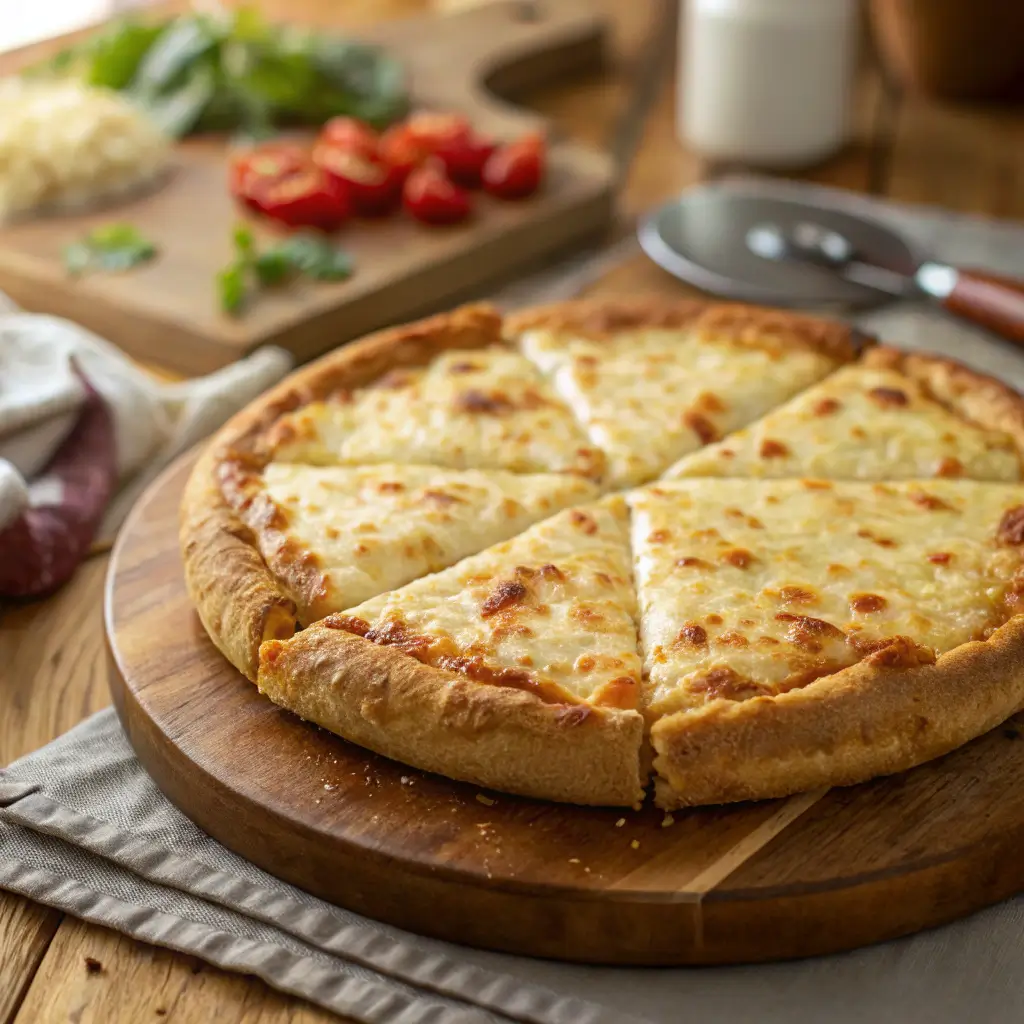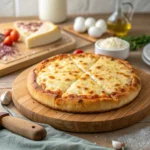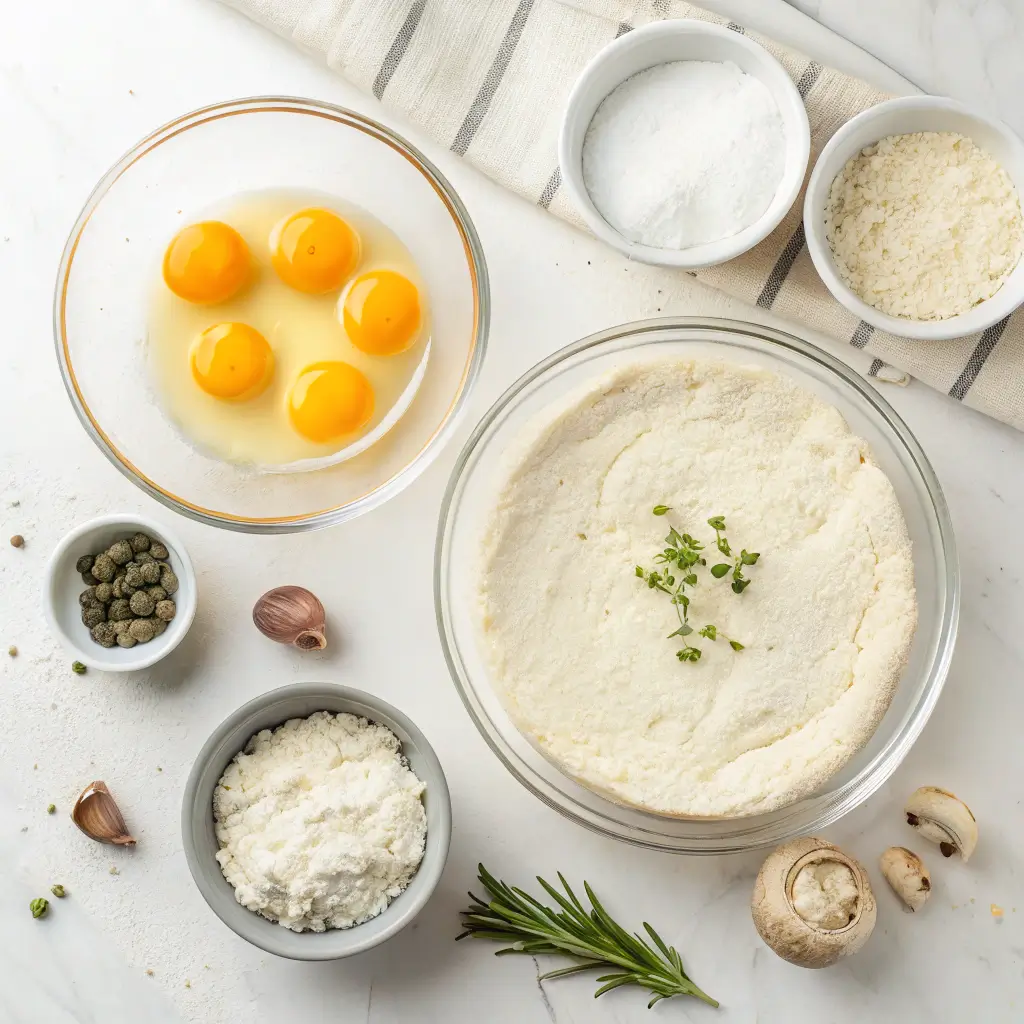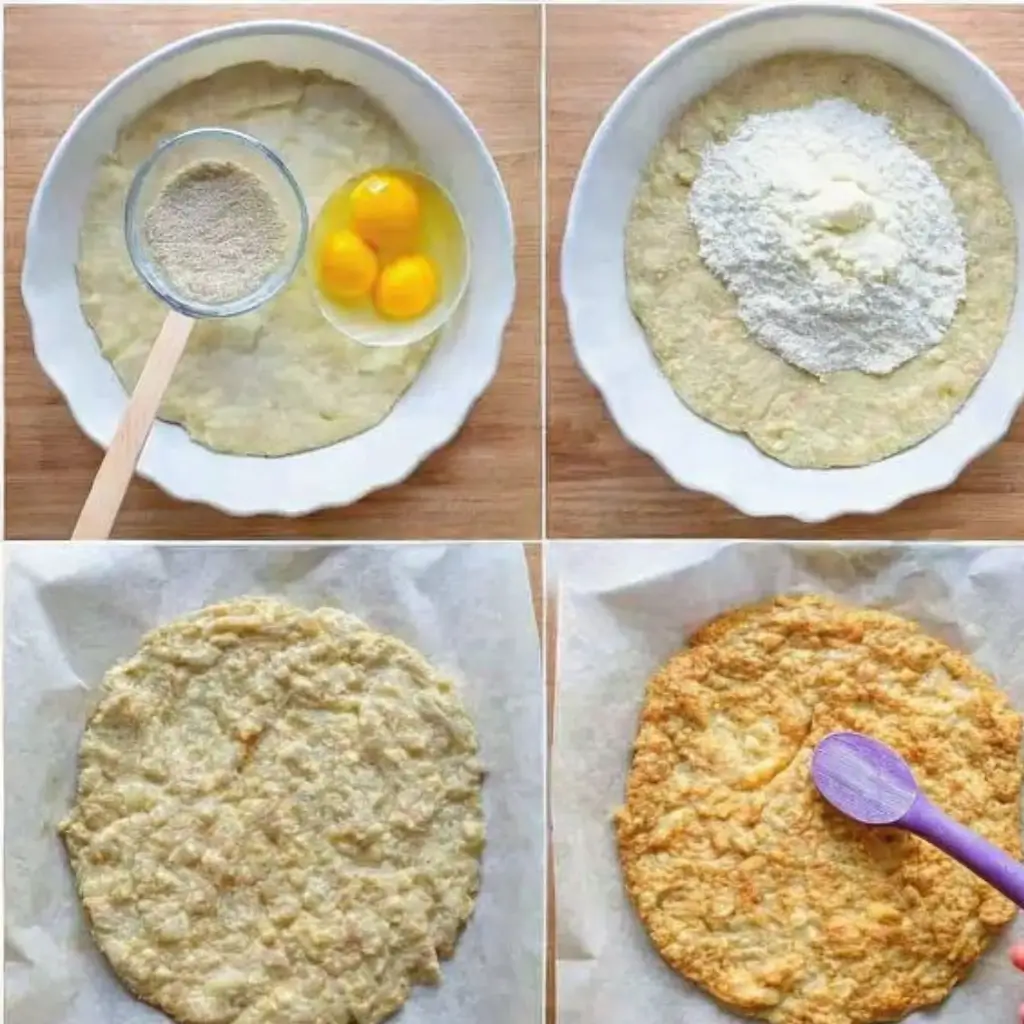Cottage cheese pizza crust is changing the way we think about healthy, protein-packed comfort food. This smart, satisfying alternative to traditional dough isn’t just for fitness enthusiasts—it’s perfect for anyone looking to enjoy pizza without the guilt. Whether you’re watching your carbs, boosting your protein intake, or simply love experimenting with creative recipes, this unique crust is an easy win. In this article, we’ll explore everything you need to know: from what makes this crust so special to tips, step-by-step recipes, topping ideas, and health comparisons with other crusts.

Table of Contents
Table of Contents
Why Choose a Cottage Cheese Pizza Crust?
The Rise of Protein-Packed Crust Alternatives
In the growing world of health-conscious food trends, high-protein alternatives are everywhere. And cottage cheese pizza crust is leading the charge. Thanks to its rich protein content and creamy texture, cottage cheese serves as a perfect binder and flavor base in low-carb recipes. Unlike traditional flour crusts, it keeps you full longer, supports muscle repair, and fits easily into keto and low-glycemic meal plans.
Health Benefits of Cottage Cheese in Pizza Dough
Cottage cheese isn’t just a filler—it brings real health perks. It’s naturally high in casein protein, which digests slowly and helps with satiety. It’s also packed with essential nutrients like calcium, phosphorus, and B vitamins. When baked into a crust, cottage cheese adds moisture without excess fat, making the crust tender but firm, and better for blood sugar control than refined-flour options.
Comparing Traditional vs. Cottage Cheese Pizza Crust
Let’s break down how a standard flour crust compares to one made with cottage cheese:
| Feature | Traditional Crust | Cottage Cheese Crust |
|---|---|---|
| Calories (per slice) | 250–300 | 120–180 |
| Protein | 7g | 14–18g |
| Carbs | 30–35g | 4–8g |
| Fat | 6–8g | 5–7g |
| Gluten-Free Option | No | Yes |
| Keto-Friendly | No | Yes |
| Digestion Impact | High-GI (quick spike) | Low-GI (slower release) |

Cottage Cheese Pizza Crust
- Total Time: 35 minutes
- Yield: 4 slices
Description
A high-protein, low-carb pizza crust made with cottage cheese—perfect for a healthier, satisfying pizza night.
Ingredients
- 1 cup full-fat cottage cheese
- 2 large eggs
- ½ cup almond flour
- ¼ tsp baking powder
- Pinch of salt
- ½ tsp garlic powder
- ½ tsp Italian seasoning
Instructions
- Preheat oven to 425°F (220°C) and line a baking sheet with parchment paper.
- In a food processor, blend cottage cheese, eggs, almond flour, baking powder, salt, garlic powder, and Italian seasoning until smooth.
- Pour mixture onto baking sheet and spread into a ¼-inch thick round or rectangle.
- Bake for 20–25 minutes until edges are golden and center is set. Flip and bake 5 more minutes for extra crispiness.
- Add your favorite toppings and return to oven until cheese melts and edges crisp up.
Notes
Drain cottage cheese before use to avoid a watery crust. For nut-free option, use sunflower seed flour. Try with lean meats or low-moisture veggies for a healthy topping combo.
- Prep Time: 10 minutes
- Cook Time: 25 minutes
- Category: Pizza
- Method: Baking
- Cuisine: Healthy
Ingredients That Make a Perfect Cottage Cheese Pizza Crust

Essential Ingredients for Stability and Texture
Creating a reliable cottage cheese pizza crust starts with choosing the right ingredients. You don’t need anything fancy—just a few pantry staples that work together to form a firm, flexible crust:
- Cottage Cheese (1 cup): Full-fat works best for flavor and structure.
- Eggs (2 large): Help bind everything and prevent crumbling.
- Almond Flour (½ cup): Adds body and keeps carbs low.
- Baking Powder (¼ tsp): Gives the crust a slight lift without making it fluffy.
- swab, Garlic Powder, and Italian Seasoning For taste and aroma.
This simple mix yields a flavorful crust that holds up under toppings without being dense or rubbery.
Why Use Cottage Cheese Instead of Greek Yogurt or Ricotta?
While Greek yogurt and ricotta are common in high-protein baking, cottage cheese has a distinct advantage:
- Higher protein content per cup
- Less sugar and fewer carbs
- Better baking behavior—firms up without becoming chewy
- More moisture without heaviness
Ricotta tends to stay soft and watery, while Greek yogurt can turn sour under heat. Cottage cheese, when blended and drained, gives you a light yet sturdy base with a mild flavor that doesn’t overpower the toppings.
Learn more about using banana cottage cheese pancakes to explore how cottage cheese handles heat and texture in baked recipes.
Best Cheese Pairings to Complement the Crust
Although cottage cheese forms the crust, you can enhance flavor and texture by combining it with:
- Shredded mozzarella: Melts beautifully and adds stretch.
- Parmesan: Sharp and salty; adds a crisp, golden finish.
- Goat cheese: Great for Mediterranean or herby crust variations.
Use these cheeses sparingly inside the dough or as toppings, keeping the balance between moisture and structure.
Step-by-Step Recipe for Cottage Cheese Pizza Crust

How to Blend the Ingredients for a Smooth Base
To make a delicious and consistent cottage cheese pizza crust, start by blending your ingredients until smooth. Use a food processor or high-speed blender to combine:
- 1 cup full-fat or low-fat cottage cheese
- 2 large eggs
- ½ mug almond flour( or oat flour fornon-keto)
- ¼ tsp baking powder
- Pinch of salt and garlic powder for taste
This mixture should be thick but pourable. If it’s too loose, add a tablespoon of flaxseed meal or a little more flour to bind it better.
Baking Time, Temperature & Crust Thickness Tips
Preheat your oven to 425°F (220°C). Line a baking sheet with parchment paper and lightly grease it. Pour the admixture into a round or blockish shape, about ¼ inch thick . Singe for 20 – 25 twinkles or until the edges are golden brown and the center is set . For redundant crispiness, flip and singe another 5 twinkles
Discover great ideas like low-carb high-protein bagels to keep your baking protein-packed and versatile.
Making It Gluten-Free or Keto-Friendly
This crust is naturally gluten-free and can fluently be acclimated to fit a keto life.
Replace almond flour with coconut flour (use ⅓ the amount) or sunflower seed flour for a nut-free alternative. Always check your baking powder for hidden starches or gluten.
Tips to Avoid a Watery Cottage Cheese Crust
How to Properly Drain or Dry Cottage Cheese
A watery crust is a common problem—but one that’s easy to avoid. Simply drain your cottage cheese through a cheesecloth or a fine mesh sieve for at least 30 minutes before use. You can also press it with the back of a spoon to remove excess moisture faster.
Check out cottage cheese dip for more recipes where controlling moisture makes a difference.
Using Binding Agents: Eggs, Almond Flour, or Oat Fiber
Too much moisture? Add more dry ingredients. Eggs offer structure, while almond flour and oat fiber absorb moisture and improve texture. If you’re aiming for a chewy crust, adding 1 tablespoon of psyllium husk can also help without altering the flavor.
Oven Pre-Baking Tricks for Crispier Base
Before adding toppings, bake the base alone—a blind bake. This sets the structure, dries excess water, and keeps the crust from becoming soggy. After that, add your sauce, cheese, and toppings before returning it to the oven for the final crisp.
Best Toppings for Cottage Cheese Pizza Crust Recipes
Best Toppings for a High-Protein Cottage Cheese Pizza Crust
Toppings can make or break your pizza, especially when you’re working with a unique base like cottage cheese pizza crust. To complement the crust’s creamy, savory flavor and high-protein profile, focus on low-moisture, nutrient-rich toppings that won’t weigh it down.
Top high-protein and low-carb topping choices include:
- Lean Meats: grilled chicken breast, ground turkey, turkey pepperoni
- Low-Moisture Veggies: bell peppers, red onion, spinach, olives, mushrooms
- Cheeses: part-skim mozzarella, provolone, parmesan shreds
- Extras: chili flakes, fresh garlic, and Italian seasoning
These choices keep your pizza low in carbs while delivering serious flavor and crunch—without ruining the integrity of the cottage cheese pizza crust.
Vegetarian, Meat-Lover, and Mediterranean Variations
Want to spice things up? Here are three style variations that elevate your pizza game while working perfectly with your cottage cheese base:
- Vegetarian Delight: zucchini ribbons, caramelized onions, roasted red pepper, fresh basil
- Meat Lover’s Feast: beef sausage, smoked bacon, diced ham, cheddar sprinkles
- Mediterranean Mix: A hummus base topped with sun-dried tomatoes, artichoke hearts, kalamata olives, and goat cheese.
These combos are not only visually appealing but also ideal for family-style pizzas or weekend treats.
Using Fresh Herbs and Spices for Flavor Boost
Fresh herbs are the secret to elevating a homemade pizza. Once the pizza is out of the roaster, eclipse it with:
- Chopped parsley or basil
- A drizzle of extra virgin olive oil
- Crushed red pepper for heat
- Lemon zest for brightness
Since cottage cheese pizza crust is mild, these toppings enhance every bite without overpowering the flavor of the crust or turning it soggy.
Nutrition Facts and Health Benefits of Cottage Cheese Pizza Crust
Macronutrient Breakdown
Understanding the nutrition behind cottage cheese pizza crust can help you decide if it fits your health goals. Here’s a quick look at an average slice (based on a 10-inch crust, cut into 6 slices):
| Nutrient | Per Slice |
|---|---|
| Calories | 140–170 |
| Protein | 14–18g |
| Carbohydrates | 4–6g |
| Fat | 7–9g |
| Fiber | 1–2g |
| Sugar | 1g |
| Gluten-Free | Yes |
| Keto-Friendly | Yes |
This makes the cottage cheese pizza crust a much better choice than traditional wheat-based options, especially for those watching carbs or increasing protein intake.
Health Benefits of Using Cottage Cheese in Pizza Dough
Cottage cheese is a powerhouse ingredient. Its slow-digesting casein protein helps promote fullness, making it excellent for weight loss or intermittent fasting. It’s also packed with:
- Calcium: for strong bones and teeth
- B12 and Riboflavin: for energy production
- Phosphorus: to support metabolic health
Don’t miss our cottage cheese pudding to see how this nutrient-dense ingredient can shine even in desserts.
Creative Variations and Add-Ons Using Cottage Cheese Pizza Crust
Fun Flavor Variations
Once you’ve mastered the basic cottage cheese pizza crust, take it up a notch with bold twists that match your flavor preferences and way of life. Some flavor-packed mix-ins:
- Mix in oregano, basil, and a dash of red pepper for an Italian twist.
- Spicy Crust: Mix in crushed jalapeños or cayenne
- Cheesy Blend Crust: Stir in shredded cheddar or gouda into the batter
Each of these tweaks keeps your pizza low-carb while enhancing the flavor experience.
Creative Ways to Use Cottage Cheese Pizza Crust Beyond Pizza
Who says you can only make pizza? This crust base works beautifully for other recipes, including:
- Mini pizza bites – Use a muffin tin and make quick snacks for kids or parties
- Slice flatbreads into wedges and pair with your favorite dips.
- Breakfast pizzas – Add scrambled eggs and turkey bacon on top of a par-baked crust
Common Questions About Cottage Cheese Pizza Crust
Can I Make Pizza Dough with Cottage Cheese?
Yes, you can! Cottage cheese creates a soft yet stable dough when blended with eggs and low-carb flours. Its creamy texture and protein content make it perfect for pizza crust without needing yeast or rising time.
Does Cottage Cheese Melt on Pizza?
Not exactly. Cottage cheese doesn’t melt like mozzarella, but it softens and browns slightly. When used in the crust, it bakes into the base structure. When used as a topping, mix it with other cheeses for better melting behavior.
What Is the Healthiest Crust for Pizza?
The healthiest crust is one that’s low in refined carbs, high in protein, and nutrient-dense—like a cottage cheese pizza crust. Compared to traditional flour crusts, it offers fewer calories and more protein, making it ideal for weight control and muscle gain.
Why Is My Cottage Cheese Pizza Bowl Watery?
That often happens when you skip draining the cottage cheese. Watery bowls mean too much liquid, which makes the crust soggy. Always drain cottage cheese before mixing, and avoid using low-fat versions that tend to be runnier.
Don’t miss our cottage cheese salad recipe for another low-calorie meal using drained, fresh cottage cheese.
For more recipes, follow us on Facebook.
